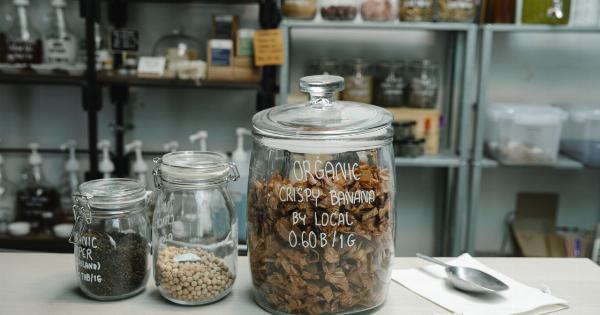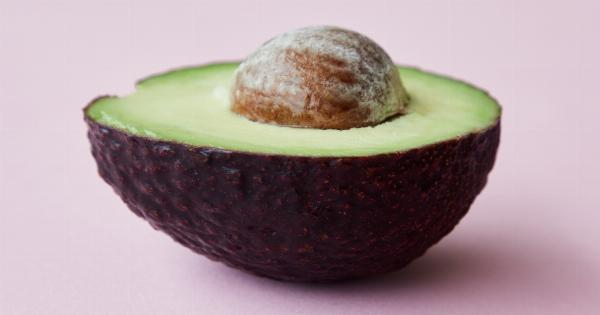Phlegm is a thick, mucus-like substance that is produced by your respiratory system. It plays a crucial role in keeping your airways moist and free from irritants.
While phlegm is usually clear or white, it can sometimes take on different colors, which may indicate an underlying health issue. In this article, we will explore the different colors of phlegm and what they might reveal about your health.
1. Clear or White Phlegm
Clear or white phlegm is considered normal and is a sign of a healthy respiratory system. It is mostly made up of water, immune cells, and mucus.
When you have a common cold or respiratory infection, your body produces more mucus, leading to an increase in clear or white phlegm. It helps to lubricate your airways and traps the irritants or pathogens that enter your respiratory system.
If you notice an excessive amount of clear or white phlegm, it could be due to allergies, a viral infection, or even acid reflux. These conditions can stimulate the production of mucus, resulting in increased phlegm production.
2. Yellow or Green Phlegm
Yellow or green phlegm is often a sign of an infection. The presence of these colors indicates the presence of pus or dead white blood cells, which are produced to fight off infections.
When your body is fighting a respiratory infection caused by bacteria, the white blood cells release an enzyme called myeloperoxidase, which gives the phlegm a yellow or green color.
If you have yellow or green phlegm, it could be a sign of a more severe respiratory infection, such as bronchitis or pneumonia.
These infections often require medical treatment, so it is important to consult a healthcare professional if you notice these colors in your phlegm.
3. Brown Phlegm
Brown phlegm is not a common color and may indicate the presence of dried blood in your respiratory system. It can occur due to various factors, such as smoking, air pollution, or a respiratory infection.
Inhaling irritants or pollutants for an extended period can cause inflammation and damage to your airways, leading to brown-colored phlegm.
If you consistently produce brown phlegm, it is essential to seek medical attention. It could be a sign of a more serious condition, such as chronic bronchitis or lung cancer.
A healthcare professional can evaluate your symptoms and conduct further tests to determine the underlying cause.
4. Red Phlegm
Red-colored phlegm can be alarming and may indicate the presence of fresh blood. It could be the result of a respiratory infection, severe bronchitis, or even pulmonary embolism.
If you notice blood in your phlegm, it is crucial to consult a healthcare professional immediately, as it could be a sign of a serious condition that requires prompt medical attention.
5. Pink Phlegm
Pink phlegm is often a sign of bleeding in your respiratory system. It can occur due to several reasons, including a respiratory infection, tuberculosis, or even lung cancer.
Consult a healthcare professional if you consistently produce pink phlegm, as they can help diagnose the underlying cause and recommend appropriate treatment.
6. Gray or Black Phlegm
Gray or black phlegm is rare but can be a cause for concern. It may indicate the presence of particles or pollutants that you have inhaled, such as coal dust or asphalt dust.
In some cases, it could also be a sign of a lung infection caused by certain fungi or bacteria.
If you experience persistent gray or black phlegm, it is crucial to seek medical attention as it may signify significant damage to your respiratory system or underlying lung conditions.
7. Frothy Phlegm
Frothy phlegm is often foamy in texture and may be pink or white. It can occur due to several reasons, including congestive heart failure, pneumonia, or even lung edema.
When your heart is not pumping effectively, fluid can accumulate in your lungs, leading to the production of frothy phlegm.
If you consistently notice frothy phlegm, it is important to consult a healthcare professional, as it may indicate a significant underlying cardiovascular or respiratory issue.
8. Orange Phlegm
Orange phlegm is relatively rare and may be a sign of infection or the presence of certain medications or food dyes.
It can occur due to the breakdown of red blood cells or even the consumption of foods containing high levels of carotenoids, such as carrots or paprika. If you consistently produce orange phlegm and are not taking any medications or consuming food dyes, it is advisable to consult a healthcare professional.
9. Purple or Blue Phlegm
Purple or blue phlegm is extremely uncommon but can occur as a result of certain medical conditions, such as cystic fibrosis or bronchiectasis. These conditions can affect the coloring of your mucus, making it appear purple or blue.
If you consistently produce purple or blue phlegm, it is essential to seek medical attention to determine the underlying cause and receive appropriate treatment.
10. Clear, Pink, or Slightly Bloody Phlegm
If you notice clear, pink, or slightly bloody phlegm after intense physical activity or respiratory exertion, it is usually not a cause for concern.
This type of phlegm can occur due to tiny blood vessels in your respiratory system breaking during strenuous activities. However, if you consistently produce significant amounts of blood-tinged phlegm, it is advisable to consult a healthcare professional to rule out any underlying medical conditions.






























